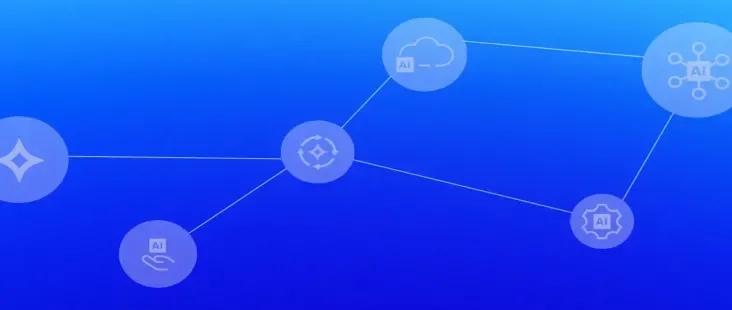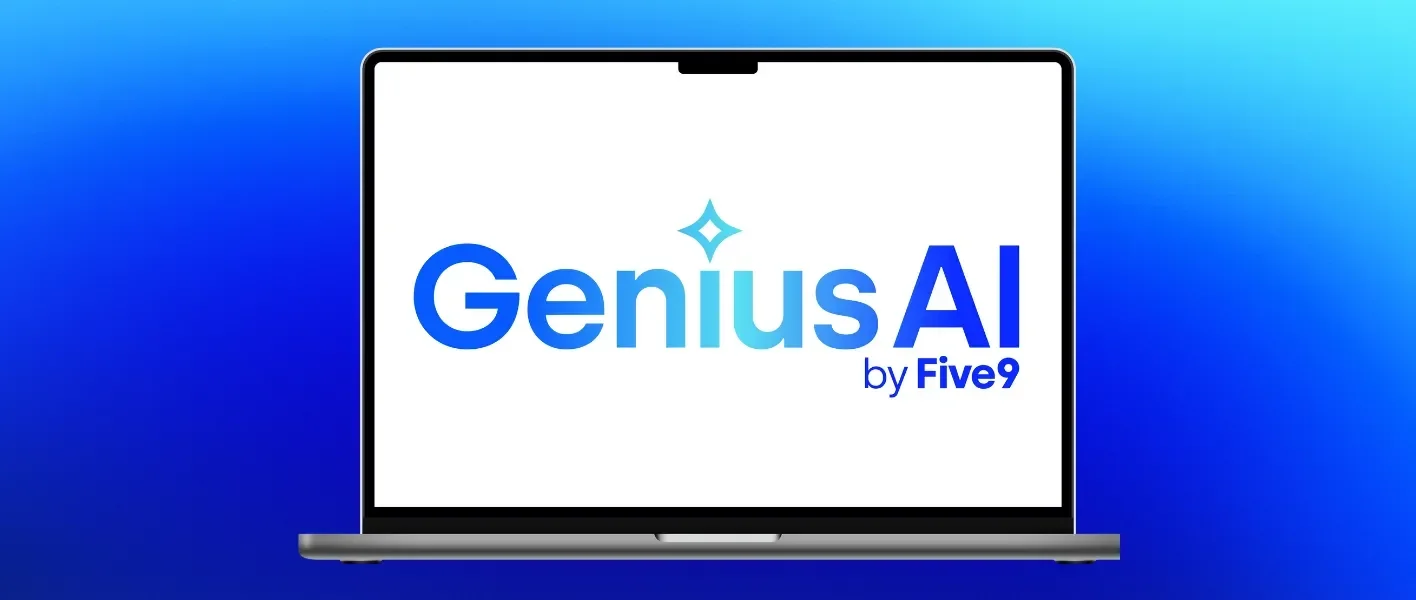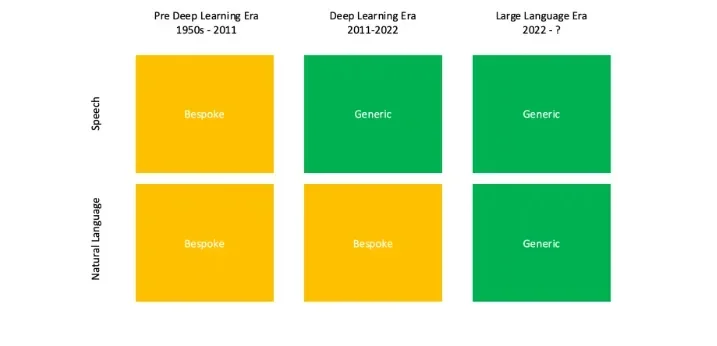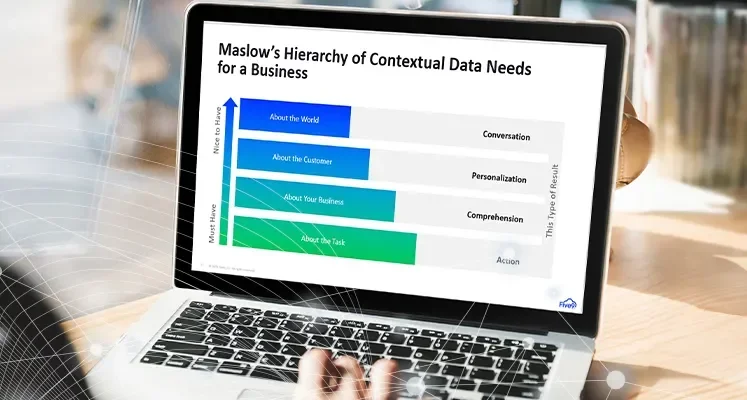
Contextual Data: The New Gold in the Era of Generative AI
Undoubtedly, AI has undergone a series of dramatic breakthroughs in the past few years. Underneath all of those breakthroughs has been one core truth – more data means better results. As an enterprise wanting to deploy AI-based applications like voice bots, chatbots, or agent assistants, this meant collecting lots of data to be used for training purposes. If you wanted to have a chatbot that could support transfers of funds between accounts, you would need to collect lots of example conversations where this was requested, and then use those examples to train a custom model that understood this particular intent.
Data's New Role in Generative AI
With generative AI, data is still essential, but the nature of that data has changed. These new models are so capable, that they don’t need to be trained on large volumes of example conversations. They are trained more like how a human is trained. With a human, you’d tell a human agent “plain English” what you want them to do, and from there, they could understand any conversation and determine how to proceed. The same is true for generative AI. With generative AI, you provide it a prompt – “plain English” instructions on what to do. This prompt – which can be as long as several lengthy novels – represents the critical data essential to use generative AI. This new type of data is called contextual data.
Unlocking Generative AI's Potential with Contextual Data
Contextual data represents the information that a generative AI needs to be provided to do its job effectively. This contextual data is, in many ways, the same type of information you’d want to provide a human to do their job. Training manuals, reference materials, and “dos” and “do nots”, for example. The more contextual data that can be provided, the better the results you get. More accuracy, more use cases, more personalization, and happier customers. Indeed, it is contextual data, which is the difference between the generic ChatGPT chatbot that every consumer can use and a generative AI chatbot that provides customer support for your business.
Put more concisely – contextual data is the new gold in the era of generative AI.
The Data Framework: Essential for Success
How, then, should enterprises think about contextual data? What is important, and what is not as important? One way to think of this is the idea of Maslow’s hierarchy of contextual data needs, which looks something like this:
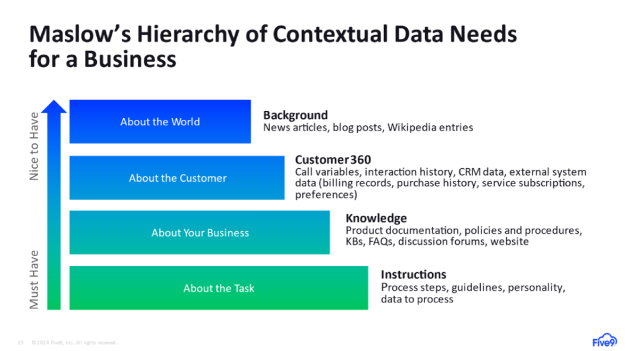
The lowest layer represents the “must-have” for performing any generative AI task. These are instructions, which describe the task. These include process steps (“please collect from the customer information about their preferences for travel, between domestic trips, Europe, or Asia. If they prefer domestic trips, inquire about their preference for metropolitan vs. scenic destinations.”), guidelines, personality, or the description of data that they need to collect (“make sure to collect the customer’s name and mailing address”).
With this baseline need satisfied, the next layer in the hierarchy is knowledge. This information is unique to each individual business. It represents all of the facts that might be needed to answer questions, offer self-service, or achieve business outcomes. Examples include product documentation, policies and procedures, knowledge bases, FAQs, discussion forum content, and even the entirety of the content of the website. Knowledge can also include information in programmatic form, for example – listings of rental properties on the market right now and all of their meta-data (number of bedrooms, whether there is a pool, etc.)
If a business stopped there, it could achieve business-specific outcomes that were functional, but impersonal, because it knew nothing about the individual customer. For this reason, the next data set is Customer 360, which includes all of the information about the customer. Examples of customer 360 data include call variables present during a call into a contact center (collected, for example, by data dips into third-party systems), history of the interactions from that customer, CRM data, and a plethora of information that is present about this customer scattered across many systems, such as billing records, purchase history, case histories, service subscriptions and so on.
If a business stopped there, they could achieve personalized business specific outcomes, but joyless ones. Banter and conversation about topics of the day are often the icing on the cake of a great customer experience interaction. The ability to do those is powered by the final layer of the hierarchy – Background information. This is the stuff you want your chatbots, voicebots or agent assistants to know about and talk about – just in case. These can include recent news articles, blog posts, and even Wikipedia entries.
This hierarchy represents the mission for the next generation of technology in the contact center – tooling that allows customers to curate, use, and, most importantly – test – contextual data across all of their Generative AI use cases. This is why Five9 is announcing GenAI Studio – our workbench for building the generative AI-powered contact center of the future. To learn more, read our press release.

